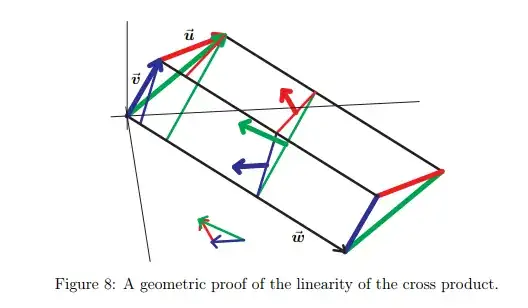The determinant formula isn't so mysterious. Consider the cross product $\mathbf{v} = \langle a,b,c \rangle \times \langle d,e,f \rangle$ as the formal determinant
$$ \det \left(\begin{array}{ccc} \mathbf{i} & \mathbf{j} & \mathbf{k}\\ a & b & c \\ d & e & f \end{array} \right) $$
where $\mathbf{i}, \mathbf{j}, \mathbf{k}$ are the standard basis vectors. If instead one considers $\mathbf{i}, \mathbf{j}, \mathbf{k}$ as indeterminates and substitutes $x, y, z$ for them, this determinant computes the dot product $\mathbf{v} \cdot \langle x, y, z \rangle$. But letting $\langle x, y, z \rangle$ be $\langle a, b, c \rangle$ or $\langle d, e, f \rangle$ gives a zero determinant, so $\mathbf{v}$ is perpendicular to the latter two vectors, hence to the plane they span, as Omnomnomnom says.
